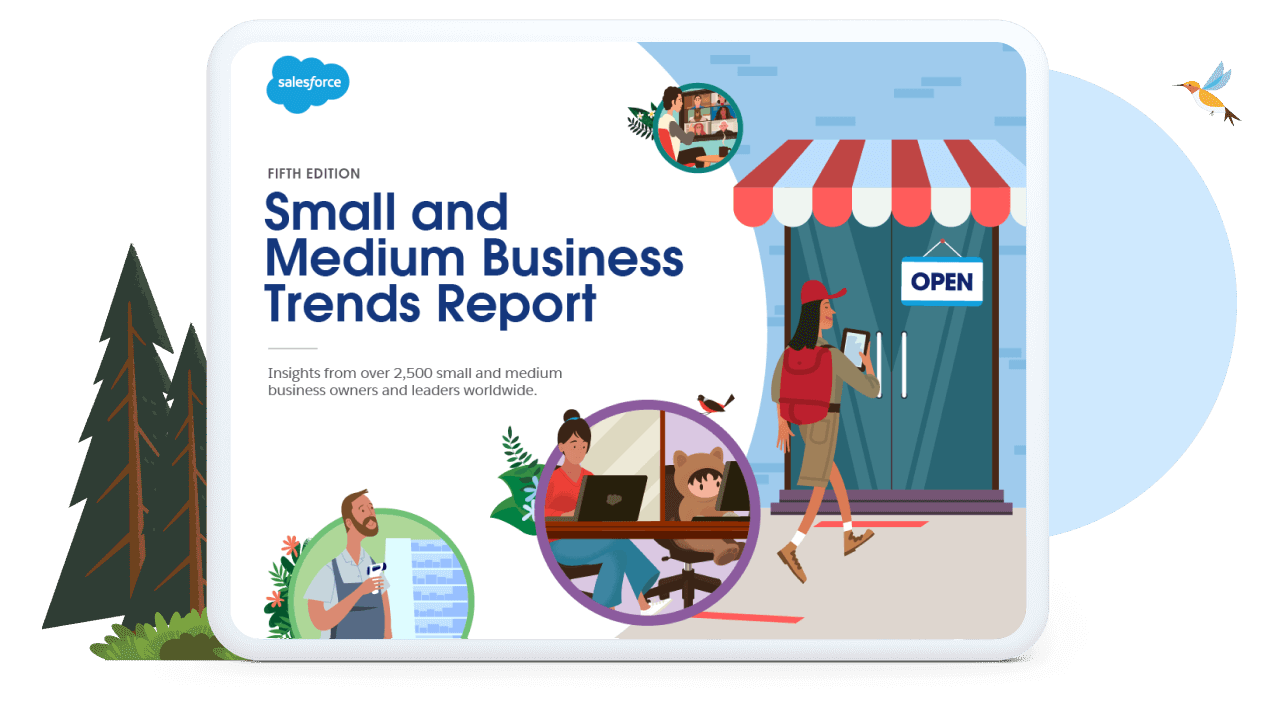The on-demand economy has changed everything from how we consume films and music to how we get around new cities and where we stay while we’re there. For small businesses, this seismic shift away from ownership – and the burdens that come with it – has led to a rapid rise in the adoption of SaaS, or Software as a Service. In fact, a Statista report shows that the global SaaS market has grown from just over £23 billion in 2015 to nearly £131 billion in 2022.
For SMEs, the benefits of SaaS range from lower capital outlays to improved accessibility and automatic updates. Most importantly, the flexibility of SaaS enables SMES without huge budgets to avoid unwieldy infrastructure and compete with larger firms. But what exactly is SaaS, and how can the benefits of SaaS help businesses do more with less?
The SMB Trends Report 5th Edition
Discover what’s driving today’s small businesses – and see where they might be headed next.

What is SaaS?
SaaS is a model where third-party providers develop software and applications, and then offer them to businesses on a pay-as-you-go basis via the cloud. This enables businesses to access apps 24/7 from anywhere with an Internet connection, rather than having to rely on onsite machines and limited business hours.
In a SaaS model, the provider is responsible for setting up and maintaining the storage, servers and software needed to deploy apps, leading to lower set-up and IT costs for their customers. But these savings are just one of the benefits of SaaS and cloud computing. Let’s look at some others.
The top benefits of SaaS
-
Improved accessibility. SaaS enables SMEs to access business-critical information and apps from anywhere, at any time. Improved access can lead to improved productivity, with employees selecting the apps that help them work smarter and faster. Gartner predicts that by 2023, 40% of workers will customise their own work experiences by curating apps, similar to the way they curate their music experiences now.
-
Lower expenditure, both in terms of initial outlay and ongoing maintenance. Businesses simply pay for what they need and use, so SMEs can leverage software that might otherwise require expensive licensing fees. This can help SMEs compete with larger companies in a way that was impossible not long ago.
-
Reduced burden on IT teams. Because third-party providers are responsible for developing, maintaining, hosting and updating software, onsite IT teams are free to focus on other tasks.
-
Security and data governance matched to customer needs. When moving to SaaS, make sure to ask potential providers to share information about their access and security standards, such as whether they offer end-to-end encryption. This will help you choose a partner with security protocols that align with your SME’s requirements.
-
Dependable data storage – all data is routinely saved in the cloud. The days of long and dusty server banks are disappearing, and today’s SME is sleek, streamlined and ready to pivot at a moment’s notice. By storing important data in the cloud, SMEs can save on office space and work with information in real time, leveraging it to make more informed business decisions.
-
Out-of-the-box tools mean quick setup, rapid implementation and immediate results. This not only lowers the barrier to access when it comes to new technology, it means that SMEs won’t have to wait months to see an ROI on their investment.
-
Access to cloud-based tools and the global workforce means a bigger hiring pool. One of the most important benefits of SaaS is its ability to enable a global workforce to work from anywhere in the world. Remote work has the potential to eliminate many location-based requirements and create more democratised and open hiring practices.
-
Automatic upgrades provide SMEs with the latest tools and features, letting SMES keep up with small business trends. This not only lessens the burden on IT teams; it helps SMEs future-proof their business.
-
Scalability and seamless integration with other SaaS offerings. With SaaS, SMEs won’t have to purchase servers or software every time they want to implement a new solution. This means that it’s easy to scale up and add applications and users as your business grows and its needs change.
-
Created for ease of use, with best practices built in. This enables SMEs to run proof of concepts and test out any new tools before implementation. The low barrier to access also eliminates the need for long employee training courses.
-
Many SaaS tools are designed to streamline mundane manual processes, leading to improved CX (Customer Experience) and better employee engagement.
Your ticket for a better tomorrow
We’re in the age of remote work. The age of the sharing economy. The age of SaaS.
We’re in a time when younger generations don’t have the same desire for ownership as previous generations did. And we’re in a moment when flexibility and resilience have been shown to be critical drivers for short- and long-term success.
Thanks to the benefits of SaaS, it’s now easy to imagine an office that isn’t an office at all. Rather it’s a connected hive, with workers around the world communicating in real time, from living rooms, beaches or cafes, in Manchester, Mumbai or Mexico City. There will be no need to pay for expensive office space. No need to pay for unwieldly on-site infrastructure. No need for workers to suffer dull commutes, for SMEs to struggle with developing complex apps, or for huge capital to be invested in pricey licenses.
Instead, SMEs will simply pay for what they use. They’ll operate in the cloud, eliminating waste and improving productivity. They’ll be able to access business-critical data at any time, from anywhere. Even better, they’ll be able to reap some of the emerging benefits of SaaS, using AI and machine learning to deliver high-level marketing and sales support. They can leverage chatbots to improve service, while using predictive analytics to provide world-class customer journeys. And they’ll do it all for a wallet-friendly price that would have been unthinkable a decade ago. When it comes to the benefits of the cloud – the future is limitless.
To see more about how SaaS and cloud computing can help create better customer relationships, check out our Beginners Guide to CRM. And to see more about how small businesses can get connected to create a brighter future, check out or Small Business Demo here.
Connected Small Business: Your Guide to Faster, Smarter Business Processes
Read our new e-book to learn how your SME can overcome even the toughest challenges by streamlining and connecting business processes.

























